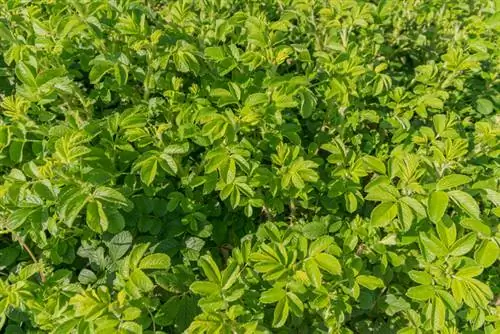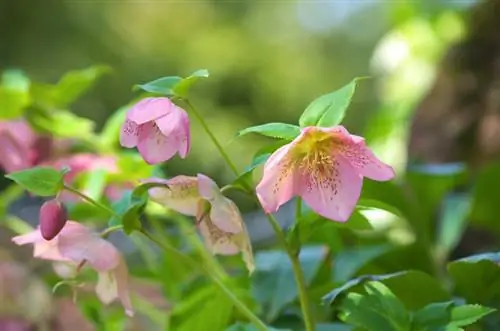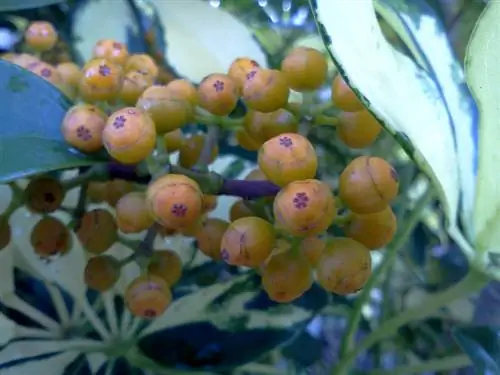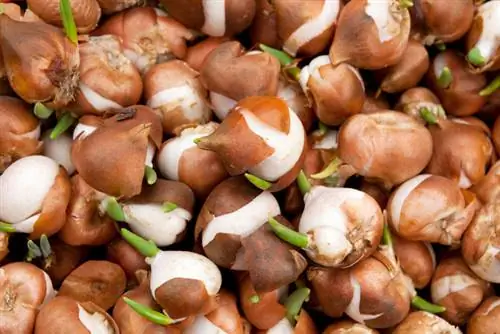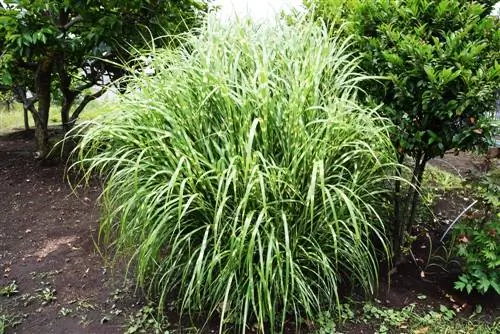- Author admin [email protected].
- Public 2023-12-16 16:46.
- Last modified 2025-01-23 11:20.
In contrast to hybrid roses, wild roses (which include the various types of dog roses) can be propagated according to their variety. There are various options available to you, and the varieties that form runners are particularly easy to reproduce.
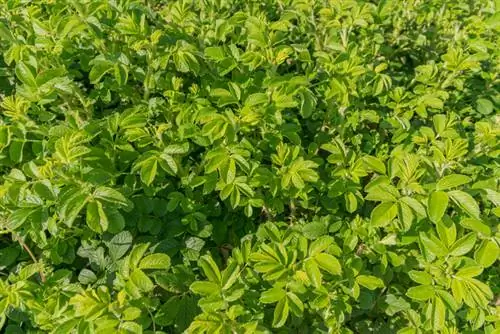
How can I propagate dog roses?
Hedge roses can be propagated by separating runners, cuttings or cuttings. Runners are cut and planted, while cuttings are cut in autumn and planted in spring and cuttings are taken in summer and rooted in seed soil.
Particularly easy: cutting off runners
Many types of roses form runners, depending on the species, to a greater or lesser extent, which can sometimes spread over several meters in the garden and also take root very quickly. The common hedge rose or dog rose (Rosa canina) in particular reproduces itself through numerous root runners, as does the popular potato rose (Rosa rugosa). Thanks to this, propagation can be achieved particularly easily:
- Separate the runners from the mother plant using a spade
- and dig them up.
- The runners are cut back by about a third,
- so that they branch better afterwards.
- Plant the newly acquired dog roses immediately at the desired location
- or. put it back into a sufficiently large bucket.
Runners are obtained either in spring before budding or in autumn for propagation.
Propagation through cuttings
In contrast to the half-ripe cuttings, cuttings are strong, woody and annual shoots. These are cut in late autumn before the first frost and kept frost-free but cold in high humidity until they are cut the following spring. For this purpose, it is best to pack the cuttings in damp sand and store them in a cool cellar or similar.
- Cuts should be approx. 20 centimeters long.
- They are planted directly in the bed or in a sufficiently deep pot in spring.
- Use a loose and well-drained substrate.
- Cut the wood just below the bottom eye and dip this end in a rooting powder (€8.00 on Amazon).
- After planting, only the top eye looks out of the soil.
- The young shoots that will appear soon should be shortened to stimulate branching.
Multiply the wild rose through cuttings
Cuttings are ideally cut between the end of July and the beginning of August, for which woody, half-ripe shoots are best suited. These should be about 10 to 15 centimeters long.
- Remove any flowers that may be present
- and all leaves except for the top leafy side shoot.
- Place the cuttings in clay pots filled with low-nutrient sowing soil.
- For better rooting, the lowest interface can be dipped in rooting powder.
- Keep the substrate slightly moist.
- Put a freezer bag or a plastic bottle (cut off at the top) over the cutting.
- For better air exchange, you can add a few holes to these improvised greenhouses.
- The cuttings are placed in a protected, partially shaded location outdoors.
- Remove the plastic cover as soon as the cutting produces new shoots.
Tip
Alternatively, it is of course also possible to propagate using seeds you have collected yourself, although you will need to have a lot of patience for this method - under certain circumstances it can take up to two years for germination.

